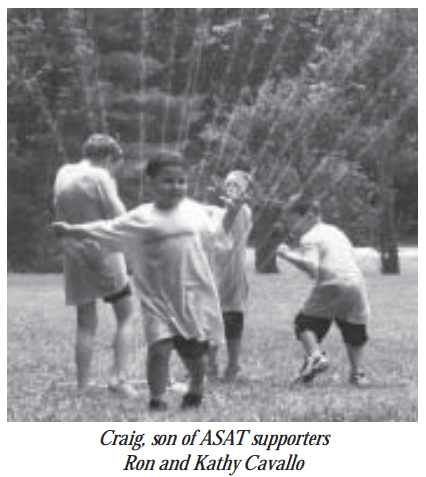 Adapted from an article written by Michael J, Opuda, PhD, Special Education Consultant; originally appearing in the MADSEC Newsletter, the newsletter of the Maine Administrators of Services for Children with Disabilities, Fall, 2002-03. Used with permission.
Adapted from an article written by Michael J, Opuda, PhD, Special Education Consultant; originally appearing in the MADSEC Newsletter, the newsletter of the Maine Administrators of Services for Children with Disabilities, Fall, 2002-03. Used with permission.
“Move America’s special education system from a culture of compliance [with the law], to a culture of accountability for results.” This was the charge President George W. Bush made to the President’s Commission on Excellence in Special Education on October 2, 2001. On July 1, 2002, the Commission issued its long awaited report, one that will frame the Congressional debate on the reauthorization of the Individuals with Disabilities Education Act (IDEA).
“The ultimate test of the value of special education is that, once identified, children [with disabilities] close the gap with their peers. That’s what accountability for results is all about,” according to the report.
The Commission issued nine major findings:
- The current special education system often places process above results, and bureaucratic compliance above student achievement, excellence, and outcomes.
- The current system uses an antiquated model that waits for a child to fail, instead of a model based on prevention and intervention.
- Children placed in special education are general education children first. General education and special education share responsibilities for children with disabilities.
- When a child fails to make progress in special education, parents have inadequate options and little recourse.
- The culture of compliance has often developed from the pressures of litigation, diverting much energy of the public schools’ first mission: educating every child.
- Many of the current methods of identifying children with disabilities lack validity. As a result, thousands of children are misidentified every year, while many others are not identified early enough or at all.
- Children with disabilities require to be prompted to engage with these materials in order for the materials to compete with the sensory consequences of stereotypy.
- The current system does not always embrace or implement evidence-based practices.
- The focus on compliance and bureaucratic imperatives in the current system, instead of academic achievement and social outcomes, fails too many children with disabilities.
In response to these findings, the Commission concluded “we must insist on high academic standards and excellence, press for accountability for results at all levels, ensure yearly progress, empower and trust parents, support and enhance teacher quality, and encourage educational reforms based upon scientifically rigorous research. In addition, we must…implement scientifically based instructional practices.”
The Commission also made three broad recommendations, which form the foundation of their report:
- Focus on results—not on process.
- Embrace a model of prevention, not a model of failure.
- Consider children with disabilities as general education children first.
While simply stated, these recommendations are, upon analysis, potentially complex. For example, will schools be “held harmless for procedural violations when the school can
demonstrate positive results for a child? How will schools distinguish between the student who is “truly disabled,” and the student who just needs a little more time to learn? What safeguards are needed to ensure scientifically based methods are utilized, rather than interventions founded upon pseudo-science, testimonials, hopes, beliefs and wishes? How and at what rate will general and special educators be provided with the training and support they need to work with students with disabilities? How will special education integrate with the broader issues of the child’s home, community and life-long needs?
These and many other questions will surface in the coming months as Congress, the Bush Administration, advocates and educational professionals work to amend the Individuals with Disabilities Education Act.
Large portions of the text in this article are reproduced verbatim from the report A New Era: Revitalizing Special Education for Children and Their Families. Other portions have been abridged or re-worded for length.
Citation for this article:
Opuda, M. (2002). Excellence in special education. Science in Autism Treatment, 4(2), 1, 5.

